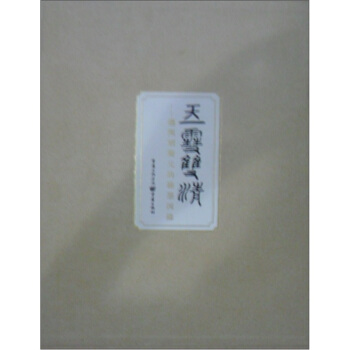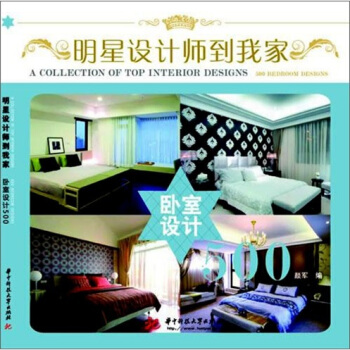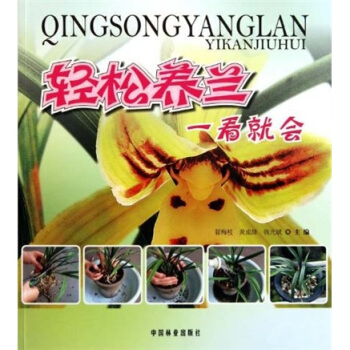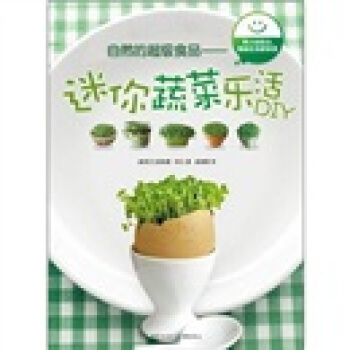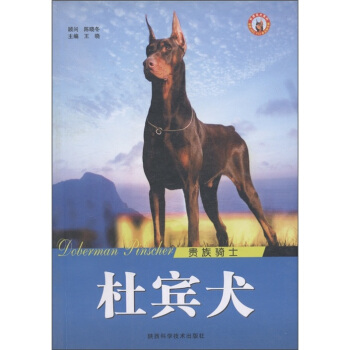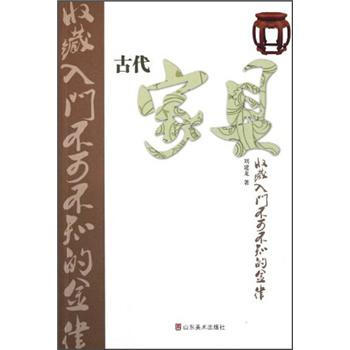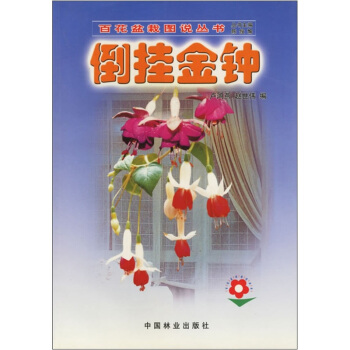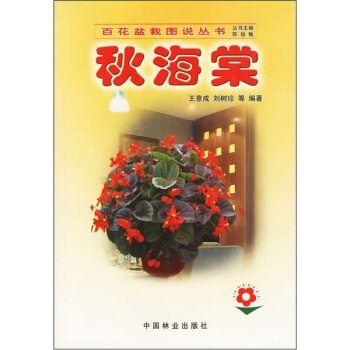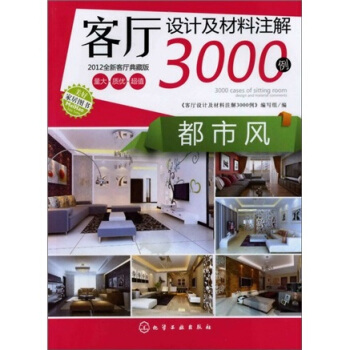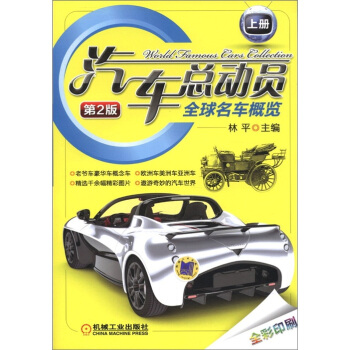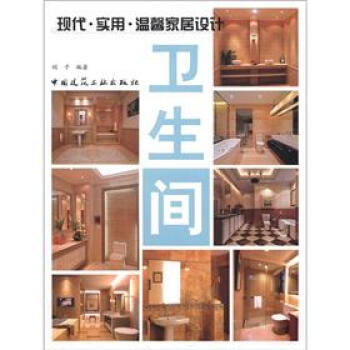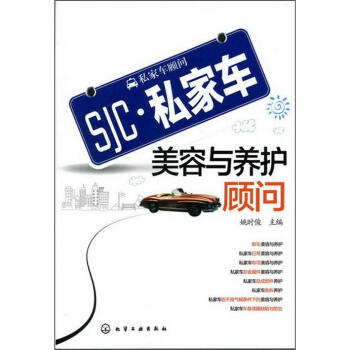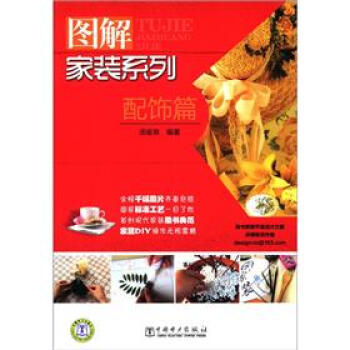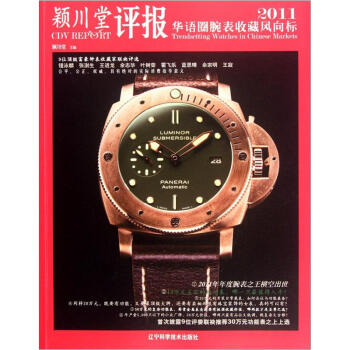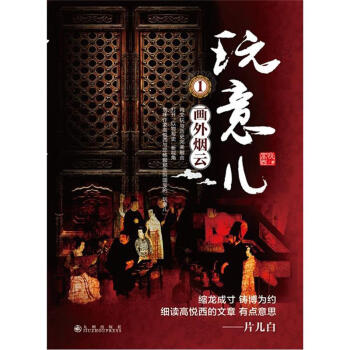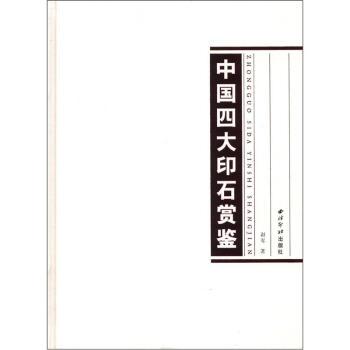![中国国宝系列:中国古瓷器(英文版) [Porcelain of Ancient China]](https://pic.tinynews.org/10678934/58d15293Na15093e3.jpg)

具体描述
内容简介
本画册选取目前中国有代表性的古代瓷器,用精美图片和通俗易懂的文字,从商周到明清以时代划分,系统介绍瓷器在中国的发展演变及分布,且每件器物说明文字简洁生动,知识点丰富,可读性强,展示了中国瓷器的悠久历史和独特魅力。
The history of Chinese pottery dates back to the early Neolithic Age.The earliest pottery shards were unearthed from Xianrendong site of Wannian County,Jiangxi Province, with a date of some 8,000 years ago. About 4,000 years later, the Shang Dynasty produced the earliest protoceladon, a leap in ceramic history. This book introduces ancient Chinese porcelain.
作者简介
XuXiaolong, born in 1952, has been engaged in ancient ceramic studiesfor over 30 years. With a keen eye for ancient pottery andporcelain objects, up to now he has published more than 20 academicpapers in authoritative journals. Currently Xu is a guest professorat Peking University Resource College, and a member of collectedarticles appraismg centre at Beijing Wenbo Garden, He is alsoformer vice director of ceramics collection committee of ChinaAssociation of Collectors,and used to be an adviser to "TreasureAppraisal"program on CCTV-2.内页插图
目录
CONTENTS
Preface
From Shang to Western Han
From Eastern Han to Northern and Southern Dynasties
Periods of Sui, Tang and Five Dynasties
Periods of Song, Liao and Kin
Periods of Yuan, Ming and Qing
A Record of Auction of Collections
A Brief Chronology of Chinese History
精彩书摘
Periods of Yuan, Ming and Qing
Ceramics production at Jingdezhen in Jiangxi began as early as the Northern and Southern Dynasties (386–589); after nearly 1,000 years of development, it became the main production hub for imperial porcelain during the Yuan Dynasty (1271–1368) established by the nomadic Mongols. For the first time in history, potters there successfully made blue and white wares decorated with refined cobalt blue pigment, coated with transparent glaze and once–fired at a high temperature of 1,300 degrees centigrade or so; and inspired by the Jun Kiln technique, they invented the underglaze red porcelain once–fired at a temperature of 1,280 degrees centigrade and featuring floral or human figure patterns painted with brilliant copper red pigment.
The blue–and–white technique was further improved during the Ming Dynasty (1368–1644). Court eunuch Zheng He (1371–1435) who made seven voyages to the Western Seas (referring to seas and lands west of the South China Sea) from 1406 to 1433 brought back a unique cobalt blue pigment from the Middle East. By applying it to blue and white wares, an effect of wash painting was acquired. Porcelain items made in the periods of Yongle (1403–1424) and Xuande (1426–1435) were hence known to be the best.
The so–called five–color porcelain wares were fired in the reign (1573–1620) of Emperor Wanli. Technically speaking, they were improvements on what had been produced in the Cizhou Kiln during the Song Dynasty. According to legend, as the bright iron red pigment contained arsenic, cases of slow poisoning occurred among the potters. Consequently, the original glaze color of dark red turned lighter and lighter, and was close to orange by the late Qing, which becomes a good criterion at present day to judge the age of a porcelain item.
The country's porcelain making further flourished during the Qing Dynasty (1644–1911), especially in the periods of Kangxi (1662–1722), Yongzheng (1723–1735) and Qianlong (1736–1795). The decorative patterns on porcelain items coated with mixed glazes give a three–dimensional effect, throwing the old underglaze or overglaze color porcelain into the shade. What's more, after repeated experiments enamel ware had been successfully trial–produced by the late period of Kangxi. By applying various pigments –– all imported from the Western countries, even this very day these highly finished products still retain their dazzling luster. Their body materials have ranged from gold, silver, glass, wood to boccaro earthenware made exclusively in Yixing County of Jiangsu.
前言/序言
Preface
The history of Chinese pottery dates back to the early Neolithic Age (c. 10,000–4,000 years BP). The earliest pottery shards were unearthed from Xianrendong ("Spirit Cave") site of Wannian County, Jiangxi Province, with a date of some 8,000 years ago. About 4,000 years later, the Shang Dynasty (1600–1046 BC) produced the earliest proto–celadon, a leap in ceramic history.
By comparison with earthenware made of baked clay with a kiln temperature of 800 degrees centigrade, the high–firing glazed porcelain made from kaolin? is of more delicate texture and beautiful decoration, and its kiln temperature must reach 1,100 degrees Celsius or above. As China is the birth place of porcelain making, it has often been referred to as "china" in some English–speaking countries.
Archaeological finds show that the export of Chinese porcelain began no later than the Tang Dynasty (618–907). As a special product of China, porcelain wares already well known all over the world were transported at that time to Central Asia, Persia and Mediterranean countries along the famous overland Silk Road, and to the Persian Gulf at first by crossing the Indian Ocean, and eventually to Africa, Europe and America along the maritime Silk Road, which was also called "Porcelain Road."
Nowadays, porcelain products made during the period from the Tang to the Five Dynasties (907–960) –– such as Tang tri–colors, celadon ware of the Yue Kiln (in present Yuyao of Zhejiang), white porcelain of the Xing Kiln (in present Xingtai of Hebei), and underglaze color porcelain of the Changsha Kiln (in present Changsha of Hunan) ––have been unearthed in large quantities in dozens of countries including North Korea (Democratic People's Republic of Korea), Japan, Thailand, India, Iran, Iraq, Sudan, Egypt and Tanzania. For instance, archaeologists have excavated a total of 12,000 porcelain sherds in the ancient Egyptian city of Fustat, and some 400 from more than 30 historical sites in the Tanganyika area of Tanzania. Obviously, exports of ancient Chinese porcelain had significantly changed local history and folkways.
In addition, Muslims living in Indonesia, Malaysia, the Philippines and other countries have the tradition of using blue or green porcelain ware as religious objects. Therefore, Chinese porcelain has been collected in many local mosques. For example, mosques in Ardabil, a historical city in northwestern Iran, have a collection of some 1,600 porcelain pieces in total, many of which are top–quality products (including well–known blue and white porcelain) baked during the Song (960–1279), Yuan (1271–1368) and Ming (1368–1644) dynasties.
Along with the exquisite products, China's technology of porcelain making was spreading worldwide as well. In the 13th century, King Ram Khamhaeng (?–1298) of the Sukhothai K i n g d om – – a n ancient kingdom exi s t ing from 1238 till 1438 in Thai history –– brought some Chinese craftsmen back to his royal city of Songkalok, and thus established the country's own porcelain industry there. From then on Thailand began to export its self–made white porcelain ware to other Southeast Asian countries.
The production of flambé porcelain by the Jian Kiln (in present Jianyang of Fujian) dates from the Northern Song Dynasty (960–1127), and these articles had been sold well in East and Southeast Asia. Flambé or kiln transmutation refers to the technique of making iridescent chinaware by the irregular application of glaze. During the Southern Song Dynasty (1127–1279) the technology was introduced into Japan, and black glazed porcelain was successfully baked in Seto, which had ever since become an important porcelain base of the country. In 1976, a sunken 14th–century merchant ship was discovered off the coast of Shin'an in South Korea; undersea excavations during following years brought up a collection of Chinese porcelain numbering 12,700 pieces. Among them, 116 were black or brown glazed porcelain by the Jian Kiln –– an important proof of the famous kiln becoming active in foreign trade at that time.
As expor t scale expanded s teadi ly, the traditional decorative figures of dragon, phoenix and kylin (or Chinese unicorn, an auspicious legendary animal) as well as floral designs on porcelain became very popular among foreign buyers. Even today Chinese porcelain articles are favorite collections of either museums or private persons all over the world.
用户评价
这本《中国国宝系列:中国古瓷器(英文版)》是我迄今为止读过的关于中国古瓷器最棒的一本书,没有之一。它以一种极其专业又不失趣味的方式,为我打开了通往中国古代陶瓷艺术的殿堂。书中对中国各个朝代最具代表性的瓷器都进行了详尽的介绍,从新石器时代的彩陶,到宋代五大名窑的绝世风采,再到明清景德镇的精美绝伦,每一件作品都仿佛在讲述一段历史。我尤其为书中对宋代汝窑的介绍所深深打动,那种“雨过天青”的釉色,温润如玉的质感,以及其背后神秘的宫廷渊源,都让我沉醉不已。这本书的图片质量简直是无可挑剔,每一张都清晰、饱满,色彩还原度极高,仿佛能让我触摸到瓷器的冰凉与温润。作者在介绍瓷器时,不仅关注其艺术价值,更深入探讨了其制作工艺、窑口特点以及文化内涵。例如,在介绍唐三彩时,书中详细解释了其多彩釉料的配方以及烧制过程中的关键技术,让我对这项古代工艺的复杂性有了全新的认识。这本书的英文写作风格非常流畅且富有学术性,很多对于瓷器艺术的精妙解读,都让我获益匪浅。我经常会把这本书作为工具书来查阅,它总能给我带来新的灵感和知识。这本书不仅让我欣赏到了中国古瓷器的美,更让我对中国悠久的历史文化产生了更加浓厚的兴趣。
评分这本《中国国宝系列:中国古瓷器(英文版)》可以说是我近年来最满意的一本艺术类书籍。作为一名艺术爱好者,我一直对中国瓷器有着莫名的情怀,但市面上能够真正打动我的书籍却不多。这本书在内容、图片质量和学术深度上都做得非常出色,完全可以称得上是“国宝”级别。书中对中国各个朝代最具代表性的瓷器进行了系统性的梳理和介绍,从造型、釉色、纹饰到工艺,都进行了详尽的分析。我尤其喜欢书中对明清时期景德镇官窑瓷器的介绍,那些精美的青花、五彩、粉彩,每一样都展现了中国瓷器艺术的巅峰。书中不仅有宏观的介绍,还有对具体作品的微观分析,比如对某个纹饰的象征意义的解读,对某个釉色的化学成分的探讨,都让我觉得非常有启发性。而且,这本书的图片质量堪称顶级,每一张都色彩饱满,细节清晰,让我仿佛置身于博物馆之中,近距离欣赏这些传世珍品。作者的英文写作非常专业且富有洞察力,很多对于瓷器艺术的精妙描述,都让我拍案叫绝。例如,在描述汝窑的釉色时,作者用了“雨过天青云破处”这样的诗意表达,瞬间就抓住了汝窑的精髓。这本书不仅是一本关于瓷器的百科全书,更是一本能够引发读者深度思考和情感共鸣的艺术读物,我强烈推荐给所有热爱中国文化和艺术的朋友们。
评分我简直不敢相信我能有机会读到这样一本详尽的关于中国古瓷器的著作,特别是以如此优美的英文呈现。这本书简直是一场视觉和知识的双重盛宴。从第一页开始,我就被深深吸引住了,那些精美的瓷器图片,色彩饱和度高,细节清晰,仿佛让我穿越了时空,置身于中国古代的辉煌年代。我一直对中国悠久的历史和灿烂的文化抱有浓厚的兴趣,而陶瓷作为其中不可或缺的重要组成部分,更是让我着迷。然而,市面上关于中国古瓷器的书籍,要么过于学术化,要么过于浅显,很难找到一本既能满足我知识渴求,又能带来审美享受的书籍。这本书的出现,恰恰填补了这一空白。作者在介绍每件瓷器时,不仅仅是简单地列出年代、窑口等基本信息,而是深入挖掘了其背后的历史背景、社会文化意义,甚至连器物上的纹饰所蕴含的象征意义都一一解读,让我对这些冰冷的器物产生了丰富的情感连接。尤其是关于宋代五大名窑的章节,那些如雨过天青般淡雅的汝窑,温润如玉的官窑,青翠欲滴的龙泉窑,秀丽别致的定窑,以及神秘莫测的建窑,书中都进行了细致入微的介绍,配以精美的插图,让我仿佛亲眼见证了这些传世佳品。书中的语言流畅自然,虽然是英文,但对于我这样非母语读者来说,阅读起来毫不费力,甚至还能从中学习到不少关于瓷器相关的专业词汇,这对我未来的阅读和研究都大有裨益。总而言之,这本书绝对是我收藏中最珍贵的一件,它不仅是一本关于瓷器的百科全书,更是一扇通往中国古代艺术殿堂的窗口。
评分作为一名对东方艺术情有独钟的收藏家,我一直在寻找一本能够全面、深入地展现中国古瓷器之美的权威性著作,而《中国国宝系列:中国古瓷器(英文版)》无疑满足了我的所有期待。这本书的编排逻辑清晰,从各个朝代的代表性瓷器风格演变,到不同窑口的技术特点,再到器物造型、釉色、胎质、装饰工艺等方方面面,都进行了详尽的阐述。我尤其欣赏书中对各个历史时期瓷器生产的社会经济背景的探讨,这使得我对瓷器的理解不再局限于艺术层面,而是将其置于宏大的历史长河中去审视,从而更加深刻地理解其价值和意义。例如,书中对元青花瓷器从宗教器物向商品化转变的分析,以及其在全球贸易中的地位,都让我大开眼界。此外,书中不仅收录了大量博物馆珍藏的国宝级瓷器,还穿插了许多私人收藏的精美器物,这极大地拓宽了我的视野。每一张图片都经过精心挑选和高质量印刷,色彩还原度极高,纹饰的细节清晰可见,甚至连釉面的光泽和质感都仿佛触手可及。作者在介绍具体的瓷器时,引用了大量的考古发现和文献资料,论证严谨,观点鲜明,让我对书中内容的可靠性深信不疑。这本书的英文表述也非常专业和到位,很多术语的翻译恰如其分,这对于我与国际同行进行交流和学习非常有帮助。我经常会花费数个小时沉浸在书中,反复品味那些穿越千年的艺术瑰宝,每一次阅读都能有新的发现和感悟。
评分这本书简直是为我这样对中国传统工艺情有独钟的海外爱好者量身定做的。我一直在学习中文,同时也一直对中国古代的陶瓷艺术充满了好奇,但苦于找不到一本真正能够让我深入了解的英文读物。这本《中国古瓷器》的出现,简直是解决了我的燃眉之急!书中的内容非常丰富,从新石器时代的彩陶,到汉代的釉陶,再到唐代的唐三彩,宋代的五大名窑,元代的青花,明清的景德镇瓷器,几乎涵盖了中国陶瓷发展的各个重要时期和标志性作品。让我特别惊喜的是,书中对唐三彩的介绍,不光有精美的图片,还详细介绍了其制作工艺和象征意义,以及唐代社会对外来文化的开放和包容。而对于景德镇瓷器的介绍,更是详尽无比,从早期青花,到斗彩、五彩、粉彩,再到珐琅彩,每一种工艺和釉色都进行了细致的讲解,并配有大量的实例图片,让我对景德镇瓷器登峰造极的艺术成就有了更深刻的认识。书中的英文表述非常地道,语言优美,而且在叙述过程中,作者巧妙地融入了大量的历史文化背景知识,使得阅读过程不仅仅是学习瓷器知识,更是一次对中国古代社会和文化的深度探索。例如,在介绍明代青花瓷时,作者详细阐述了其钴料的来源、运输以及在明代政治经济中的重要作用,让我对这些瓷器有了更宏观的理解。我还会时不时地翻阅,那些精美的图片和翔实的文字,总能带给我无尽的遐想和灵感,对于我的中国文化学习来说,这本书无疑是一份宝贵的财富。
评分最近入手了一本《中国国宝系列:中国古瓷器(英文版)》,简直让我爱不释手!作为一名对中国传统文化有着深厚情感的读者,我一直渴望能有一本这样精美又详实的书籍来了解中国古瓷器的魅力。这本书完全超出了我的预期。首先,它的装帧设计就非常精致,厚重的纸张,高清的印刷,每一页都散发着艺术的气息。书中收录的瓷器图片,简直是视觉的盛宴!那些色彩斑斓的釉彩,细腻灵动的纹饰,仿佛让我置身于古代的宫廷和文人雅士的居所,感受着那个时代的生活气息。我特别喜欢书中关于明清时期景德镇瓷器的介绍,那些青花缠枝莲,五彩团龙,粉彩花鸟,每一样都美得令人窒息。书中不仅展示了瓷器的美,更重要的是,它深入浅出地介绍了瓷器的历史演变、制作工艺以及文化内涵。例如,在介绍元青花时,作者不仅展示了其精美的图案,还详细讲解了其作为外销瓷的历史地位,以及在伊斯兰文化中的影响,这让我对元青花有了更全面的认识。书中使用的英文非常流畅易懂,即便我不是专业人士,也能轻松阅读,并从中获得丰富的知识。我常常会花几个小时,只是静静地翻阅这本书,欣赏那些穿越千年的艺术品,感受中国古代工匠的智慧和创造力。这本书不仅是一本关于瓷器的书,更是一次关于中国历史和文化的精彩旅程。
评分我必须承认,《中国国宝系列:中国古瓷器(英文版)》这本书彻底颠覆了我对传统艺术书籍的刻板印象。它不仅仅是一本图片集,也不是一本纯粹的学术论文,而是一部将艺术、历史、文化、工艺完美融合的百科全书。这本书的结构设计非常人性化,循序渐进地引导读者进入中国古瓷器的世界。从最早的原始陶器,到各个朝代的代表性瓷器,作者都进行了深入浅出的介绍,并配以大量高质量的图片。我尤其被书中对清代珐琅彩瓷器的描述所吸引,那种细腻的笔触,丰富的色彩,以及其作为宫廷御用的珍贵地位,都让我惊叹不已。书中在介绍瓷器时,不仅仅停留于器物的表面,而是深入挖掘其背后的社会、经济、文化因素。例如,在介绍元代青花瓷的传播时,作者详细讲述了其作为贸易商品,在海上丝绸之路上的重要作用,以及其对当时世界贸易格局的影响,这让我对元青花有了更宏观的认识。这本书的英文写作风格非常细腻且富有感染力,许多对于瓷器艺术的精彩描述,都让我心神荡漾。我时常会捧着这本书,沉浸在那些穿越千年的艺术瑰宝之中,每一次翻阅都能有新的感悟和启发。这本书是我个人艺术收藏中不可或缺的一部分,它让我更加深刻地理解了中国古代文明的博大精深。
评分读完《中国国宝系列:中国古瓷器(英文版)》后,我只想说,这绝对是一本值得反复品读的杰作。这本书对于我这样对中国历史文化一知半解的普通爱好者来说,简直是一扇打开新世界的大门。它没有故弄玄虚的学术术语,也没有枯燥乏味的理论讲解,而是用一种非常生动、形象的方式,将中国古瓷器的发展历程娓娓道来。从新石器时代的陶器,到秦汉时期的釉陶,再到唐代的唐三彩,每一件器物都被赋予了生命,讲述着它所处的时代的故事。我尤其被书中对宋代瓷器简洁、素雅之美的描绘所打动,那些汝窑的天青,官窑的粉青,仿佛能洗涤心灵的尘埃。书中的图片质量极高,色彩逼真,细节丰富,让我仿佛能触摸到瓷器的温润质感。作者在介绍每件瓷器时,都会讲述其背后的历史典故、文化象征,甚至连烧制过程中的一些趣味故事也包含在内,这让阅读过程充满了乐趣。例如,在介绍定窑的白瓷时,书中提到了其“泪痕”的形成原因,以及这种工艺如何体现了当时人们对美的追求,这让我对一件小小的瓷器产生了无限的遐想。这本书的英文表达清晰流畅,对于我这样的普通读者来说,阅读起来毫无压力,而且还能在不知不觉中提升我的英文水平。这本书让我对中国古瓷器产生了浓厚的兴趣,并激发了我更深入了解中国文化的愿望。
评分作为一个对艺术史充满热情的学生,我一直在寻找能够拓展我知识边界的优质资源,《中国国宝系列:中国古瓷器(英文版)》绝对是我近期遇到的最杰出的学术读物之一。这本书的深度和广度令人惊叹,它不仅仅是一本简单的图册,而是一部关于中国古瓷器的百科全书式的研究专著。作者在书中展现了深厚的学术功底,对于每个朝代的瓷器特点、窑口分布、工艺技术,都进行了严谨的考证和深入的分析。我尤其欣赏书中关于宋代瓷器艺术风格演变的探讨,从宋初的粗犷到宋末的精致,每一步的转变都与当时的社会经济和审美趣味紧密相连。书中对各个窑口的介绍,如定窑的刻划花,龙泉窑的梅子青,都配有详实的图片和文字说明,让我对这些瓷器的独特魅力有了更直观的认识。而且,作者在叙述中引用了大量的古代文献和近现代考古发掘的成果,使得其论证过程具有很高的说服力。这本书的英文写作风格非常严谨,逻辑清晰,术语使用准确,对于我进行学术研究和论文写作非常有参考价值。例如,书中对“釉里红”工艺的详细介绍,包括其技术难点、发展过程以及在明代瓷器中的地位,都为我提供了一个非常好的研究切入点。这本书的出版,为世界各地对中国古瓷器感兴趣的学者和爱好者提供了一个极其宝贵的资源,我强烈推荐给所有希望深入了解中国陶瓷艺术的朋友们。
评分在翻阅《中国国宝系列:中国古瓷器(英文版)》的过程中,我仿佛经历了一场穿越时空的奇妙旅程。这本书以一种极其引人入胜的方式,将中国古瓷器辉煌的历史展现在我面前。从远古的陶器萌芽,到宋代瓷器艺术的巅峰,再到明清瓷器走向世界的辉煌,每一个篇章都充满了故事和惊喜。我特别着迷于书中对唐代长沙窑瓷器的介绍,那些充满生活气息的釉下彩绘,展现了唐代开放包容的社会风貌,让我感受到了那个时代人民的热情和活力。书中不仅有精美的图片,更重要的是,作者用一种非常生动、易于理解的语言,为我们解读了这些瓷器的历史背景、文化意义以及制作工艺。例如,在介绍明代洪武时期的青花瓷时,作者详细讲解了当时由于“苏麻离青”料的限制,青花颜色相对沉郁,这种特殊的时代印记,反而成为了洪武青花独特的魅力所在。这本书的英文表述非常流畅自然,没有任何生涩的学术腔调,让我在享受阅读乐趣的同时,也能够从中汲取丰富的知识。我经常会把这本书放在床头,睡前翻阅几页,那些精美的瓷器图片和引人入胜的故事,总能让我带着美好的心情进入梦乡。这本书绝对是我近年来最值得投资的一本文化读物,它让我对中国古瓷器有了全新的认识,并更加热爱中国的传统文化。
相关图书
本站所有内容均为互联网搜索引擎提供的公开搜索信息,本站不存储任何数据与内容,任何内容与数据均与本站无关,如有需要请联系相关搜索引擎包括但不限于百度,google,bing,sogou 等
© 2026 book.tinynews.org All Rights Reserved. 静思书屋 版权所有

